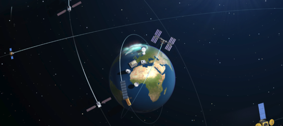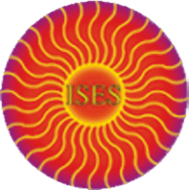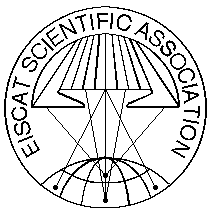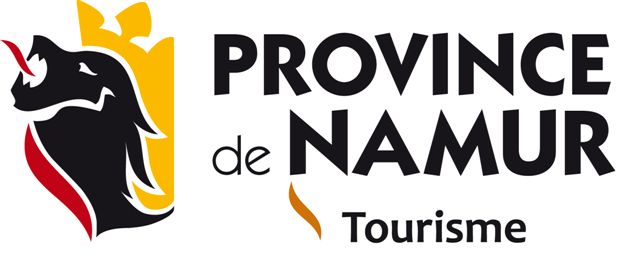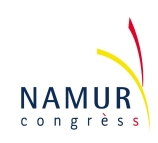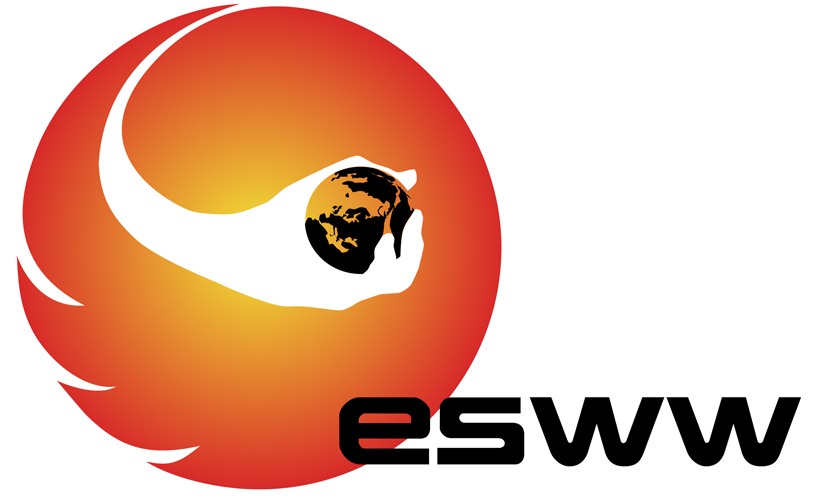
November 28 - December 02, 2011 - Namur, Belgium
Posters session 2
Building the European SSA Space Weather Framework
| Session: | Posters Session 2 (09) |
| Type: | |
| Date: | Tuesday, November 29, 2011 |
| Time: | 10:30 - 11:15 |
| Chair: | Paola Chiarini. Alain Hilgers & Mats Lungqvist |
| Co-chair: | |
| Remarks: |
| Seq | Time | Title | Abs No | ||||
| 1 | 00:00 |
I love my Sun-4: an Educational Tool
Tulunay, Yurdanur1; Crosby, Norma B.2; Tulunay, Ersin3 1METU/ODTU, TURKEY; 2BIRA-IASB, BELGIUM; 3METU/ODTU Electrical and Electronics Engineering Dept., TURKEY
Space technology has become part of our daily life with human activities in space increasing at a rapid rate. However, our advanced technology has become more than ever vulnerable to the space weather. To properly address these issues, it is essential that we not only increase our fundamental and applied research activities, but also provide education and outreach activities in the space weather field. It is important that children, the flag carriers of tomorrow, become aware about the dynamic relation that exists between the Sun and Earth. Under the umbrella of IHY and the COST 724 Action the "I Love My Sun" concept was created and initiated by Y. Tulunay. The first "I Love My Sun-1" event was conducted in 2008 and Nov. 2009 as a national project in Turkey. Y.Tulunay is continuing the "I Love My Sun" initiative as an European outreach activity under the umbrella of the COST ES0803 Action [http://www.costes0803.noa.gr/] in subgroup "General Public Outreach to the Non-Specialist" and the ESA Space Weather Working Team (SWWT) Education, Outreach and Emerging Markets (EOEM) topical group[http://eoem.aeronomie.be]. The main objectives of the "I Love My Sun-2" event, which was held in Turkey, were to 1.) Make children (any type of class and school) aware of Space Weather, Sun, Sun-Earth relations and of how they, the children, are part of this global picture, and 2.) Investigate if this exercise can lead to novel ways of approaching children with autism spectrum disorder. Since then the current "I Love My Sun" initiative has been in operation, now known as "I Love My Sun-3", in which a spatial parameter has been added, meaning the initiative has gone European. In this paper we describe "I Love My Sun - 4". In this initiative a temporal dimension is added to the project. That is, the Ayse Abla School of the previous Event is to be re-visited. The level of digestion of the information conveyed a year ago will be investigated as much as possible. The output of this Event will be evaluated the first time by using a tentative metric like format which is expected to form the basis of a more objective template to be used for future tasks. In short, the temporal dimension and the metrics are the two novel components to be introduced with this paper. |
|||||
| 2 | 00:00 |
Space Weather Service provided by Kanzelhoehe Observatory
Hirtenfellner-Polanec, Wolfgang; Pˆtzi, Werner; Veronig, Astrid; Temmer, Manuela; Baumgartner, Dietmar Kanzelhˆhe Observatory, Institute of Physics, University of Graz, AUSTRIA Kanzelhoehe Observatory for Solar and Environmental Research (KSO) regularly performs full-disk observations of the solar photosphere (white light) and chromosphere in the Hα and the Ca II K spectral lines with high time cadence. Such ground-based observations are highly relevant for space weather monitoring, as they provide insight into the evolution of solar active regions, flares and prominence eruptions. The KSO patrol instrument is routinely operated every day (if weather permits) gathering full-disk imagery at a time cadence of about 10 s. In this poster we give an overview of the KSO observations and data products, and their relevance to ESA's SSA programme. |
|||||
| 3 | 00:00 |
Use of Pitch-Angle Distribution Information of Solar Electrons & Ions to Investigate Characteristics of Magnetic Clouds
Malandraki, Olga1; Dorrian, Gareth1; Tan, Lun C.2; Reames, Donald2; Ng, Chee3; Wang, Linghua4 1National Observatory of Athens, GREECE; 2University of Maryland, UNITED STATES; 3George Mason University, UNITED STATES; 4University of California, Berkeley, UNITED STATES In two magnetic cloud (MC) events examined from the pitch-angle distributions (PADs) of non-relativistic electrons we have observed the presence of reflecting boundaries of solar energetic particles, which results in the enhancement of the duration of high-energy proton intensities, causing a so-called "reservoir" effect. We have found that the MC event with a zero loss cone has a longer duration than that with a finite loss cone, which could be due to an additional escape of protons inside the loss cone. Furthermore, we have measured the pitch-angle-cosine increasing rate of directional intensities of Wind/3DP electrons and the first-order anisotropy estimated in the solar wind frame of Wind/LEMT heavy ions. At the boundary of MC events examined we have observed that the two quantities are all close to zero, indicating a very isotropic PAD of both electrons and heavy ions, and hence a very turbulent interplanetary magnetic environment. As a result, the onset time analysis, in which the scatter-free transport of first arriving particles is assumed, may not be applicable to the vicinity of the MC boundary. That could explain why Kahler et al. (2011) did not observe large path lengths of non-relativistic electrons in the exterior of MCs. |
|||||
| 4 | 00:00 |
I Love My Sun for the World-Wide Space Weather Community
Crosby, Norma B.1; Tulunay, Yurdanur2; Calders, Stijn1; Parnowski, Aleksei3; Sulic, Desanka4; Tulunay, Ersin5 1BIRA-IASB, BELGIUM; 2METU/ODTU, Dept. of Aerospace Eng., TURKEY; 3Space Research Institute NASU & NSAU, UKRAINE; 4Institute of Physics, Belgrade, SERBIA; 5METU/ODTU, Dept. of Electrical and Electronics Eng., TURKEY To create awareness and interest in the effects of space weather, public outreach activities as educational tools complement very well formal educational programs. Under the umbrella of the International Heliophysical Year (IHY) and the COST 724 Action, the "I Love My Sun" concept was created and initiated by Y. Tulunay. Since IHY, "I Love My Sun" has gone from being a national initiative in Turkey to one spread across Europe with the near-term goal of going world-wide. It is an interdisciplinary educational tool developed for school children. Its main objective is to make children aware of space weather, the Sun, Sun-Earth relations and of how they, the children, are part of this global picture. During the last years several "I Love My Sun" events have been performed in Turkey, Belgium, Ukraine and Serbia. It was agreed that a common presentation to be used for the school visits would be the best way forward for comparison "metrics" purposes. In this paper the user material that recently has been developed for performing an "I love My Sun" event is introduced. This includes a template for the presentation to be used for the school visit as well as accompanying introductory material for each slide in the presentation. Both presentation and introductory material can easily be translated into the national language(s) spoken in the country where the "I Love My Sun" event is to be held. Translations will be made available for the world-wide space weather community via the "I Love My Sun" website. |
|||||
| 5 | 00:00 |
Forecasting the Space Weather Impact : the COMESEP Project
Crosby, Norma B.1; Veronig, Astrid2; Robbrecht, Eva3; Vrsnak, Bojan4; Vennerstr¯m, Susanne5; Malandraki, Olga6; Dalla, Silvia7; Srivastava, Nandita8; Hesse, Michael9; Odstrcil, Dusan10 1BIRA-IASB, BELGIUM; 2University of Graz, AUSTRIA; 3Royal Observatory of Belgium, BELGIUM; 4Hvar Observatory, CROATIA; 5Technical University of Denmark, DENMARK; 6National Observatory of Athens, GREECE; 7University of Central Lancashire, UNITED KINGDOM; 8Udaipur Solar Observatory, INDIA; 9Community Coordinated Modeling Center at NASA Goddard Space Flight Center, UNITED STATES; 10George Mason University, Fairfax ñ NASA Goddard Space Flight Center, UNITED STATES The COronal Mass Ejections and Solar Energetic Particles (COMESEP) project is developing tools for forecasting geomagnetic storms and solar energetic particle (SEP) radiation storms. COMESEP is a three-year collaborative project with a start date of 1 Feb. 2011 and is funded by the European Union Framework 7 programme (FP7). By analysis of historical data, complemented by the extensive data coverage of solar cycle 23, the key ingredients that lead to magnetic storm and SEP events and the factors that are responsible for false alarms are being identified. To enhance our understanding of the 3D kinematics and interplanetary propagation of coronal mass ejections (CMEs), the structure, propagation and evolution of CMEs are being investigated. In parallel, the sources and propagation of SEPs are being examined and modeled. Based on the insights gained, and making use of algorithms for the automated detection of CMEs, forecasting tools for geomagnetic and SEP radiation storms will be developed and optimised. Validation and implementation of the produced tools into an operational Space Weather Alert system will be performed. Geomagnetic and SEP radiation storm alerts will be based on the COMESEP definition of risk. COMESEP is a unique cross-collaboration effort and bridges the gap between the SEP and CME scientific communities. For more information about the project, see the COMESEP website http://www.comesep.eu/ . This work has received funding from the European Commission FP7 Project COMESEP (263252). |
|||||
| 6 | 00:00 |
Data Services and analysis Tools for Solar energetic particle Events and related electromagnetic Emissions -- SEPServer
Vainio, Rami1; Heber, Bernd2; Klein, Karl-Ludwig3; Sanahuja, Blai4; Valtonen, Eino5; Usoskin, Ilya6; Spanier, Felix7; Malandraki, Olga8; Nindos, Alexander9; Aurass, Henry10; Heynderickx, Daniel11 1University of Helsinki, FINLAND; 2Christian-Albrechts-Universitaet zu Kiel, GERMANY; 3CNRS-LESIA and Observatory of Paris, FRANCE; 4Universitat de Barcelona, SPAIN; 5University of Turku, FINLAND; 6University of Oulu, FINLAND; 7Julius-Maximillians Universitaet Wuerzburg, GERMANY; 8National Observatory of Athens, GREECE; 9University of Ioannina, GREECE; 10Leibniz-Institut fuer Astrophysik Potsdam, GERMANY; 11DH Consultancy BVBA, BELGIUM Data services and analysis tools for solar energetic particle events and related electromagnetic emissions (SEPServer) is a three-year collaborative project funded by the Seventh Framework Programme of the European Union. The project started in December 2010. Its main objective is to produce a new tool, which greatly facilitates the investigation of solar energetic particles (SEPs) and their origin: a server providing SEP data, related electromagnetic (EM) observations and analysis methods, a comprehensive catalogue of the observed SEP events, and educational/outreach material on solar eruptions. The project is coordinated by the University of Helsinki and it will combine data and knowledge from eleven European partners and several collaborating parties from Europe and US. SEPServer will add value to several space missions and earth-based observations by facilitating the coordinated exploitation of and open access to SEP data and related EM observations, and promoting correct use of these data for the entire space research community. This will lead to new knowledge on the production and transport of SEPs during solar eruptions and facilitate the development of models for predicting solar radiation storms and calculation of expected fluxes/fluences of SEPs encountered by spacecraft in the interplanetary medium. SEPServer will, thus, add value to the national and European activities by combining them to a comprehensive space storm analysis service. We will present the project objectives, milestones and deliverables in detail. The first results of the project on the analysis of energetic particle events observed during the 23rd solar cycle will be reviewed. |
|||||
| 7 | 00:00 |
Versatile Space Weather monitoring at the European high Latitudes
Raita, Tero; Ulich, Thomas Sodankyl‰ Geophysical Observatory, University of Oulu, FINLAND Sodankyla Geophysical Observatory (SGO) has monitored space weather for almost 100 years in the European high latitudes by continuously measuring geomagnetic activity. Today the observatory carries out versatile space weather monitoring, which includes continuous ground-based observations of ionospheric and magnetospheric processes. So far, the observatory services have been focused on making data available to research groups, but the importance of the real-time data availability and data products has increased with increasing awareness of space weather. Some of the observations are already monitored in real-time mode, but other real-time data products are is still at the level of quick-look plots. During the past ten years SGO has been upgrading the instrumentation related to space weather monitoring and the work continues. Ionospheric processes are monitored by many instruments: ionosonde sounds the ionosphere once per minute, when widebeam riometers (mainly at 30.0 MHz) look at absorption in the D region in 10s resolution above Northern Scandinavia, and ionospheric tomography mapping from beacon satellites gives a large-scale, two-dimensional image of the F-region electron density about once per hour. In addition, the observatory acts as an instrument platform for many guest instruments like meteor radar, Fabry-Perot interferometer, GPS scintillation monitor and VLF-receivers (AARDDVARK network). Processes of the magnetosphere are monitored by broad-band VLF-receivers and the pulsation magnetometer network, which give information about fast variation of the magnetic field in high resolution. Responding to the needs of the growing space weather community in Europe, provision of real-time data products from the observatory data is one of the key tasks in near future. |
|||||
| 8 | 00:00 |
EISCAT_3D: Large Next Generation Incoherent Scatter Radar for Europe
Ulich, Thomas1; McCrea, Ian2; Mann, Ingrid3; Turunen, Esa3 1University of Oulu, FINLAND; 2STFC/Rutherford Appleton Laboratory, UNITED KINGDOM; 3EISCAT Scientific Association, SWEDEN EISCAT and its international partners are preparing for construction of the next-generation radar, to provide comprehensive 3D monitoring of the upper atmosphere and ionosphere. EISCAT_3D will consist of multiple phased arrays, using state-of-the-art signal processing and beam-forming techniques to achieve ten times higher temporal and spatial resolution than the present radars. EISCAT_3D will be designed for continuous operation, capable of imaging an extended spatial area over northern Scandinavia with multiple beams, interferometric capabilities for small-scale imaging, and real-time access to its extensive data system. From October 2010, the European Commission has been funding a four-year Preparatory Phase Study to develop the EISCAT_3D project. During this period, the remaining technical issues will be resolved and logistical and financial questions will be addressed so that construction can begin once the Preparatory Phase is completed. The first year of this project is now complete and we summarise the current plans for building EISCAT_3D, report on the progress we have made during the Preparatory Phase so far, and outline the tasks we are facing next. |
|||||
| 9 | 00:00 |
SDO Data Center at ROB
Delouille, Veronique; Mampaey, Benjamin; Boyes, David STCE/Royal Observatory of Belgium, BELGIUM The Solar Dynamics Observatory satellite, launched in February 2010, has provided for more than a year images of the Sun with unprecedented detail. Indeed, the SDO-AIA and SDO-HMI telescopes produce 4k x 4k images that amounts to 1.5Tbytes of data per day. In order for researchers and forecasters to both select and physically access the data, a backbone network of data centres has been established. The Royal Observatory of Belgium (ROB) is the first link in a chain for European distribution of data. It maintains a rolling archive of the latest 6 months of data, as well as a long-duration, low cadence data set, and a subset of the most frequently required events. It is also intended to provide real-time web access to the basic images in variable resolution. In this poster, we present ROB's data center general architecture, as well as the various tools developed accessible from our project page http://wissdom.oma.be : a menu-based web-application ('SDO-wizard'), a python and VSO-IDL modules, and a pseudo-file system. |
|||||
| 10 | 00:00 |
Space Weather Research and outreach Activities in Kenya
Omeno, Paul University of Nairobi, KENYA Although Kenya is not in a position to fully exploit space science and technology applications owing to limited resources and facilities, she still greatly emphasizes the teaching, research and outreach in space weather. The objectives are to develop the scientific insight necessary to understand the solar-terrestrial physical relationships inherent in space weather, to reconstruct and forecast near-Earth space weather and to communicate this knowledge to scientists and to the general public. This paper summarizes Space Weather Activities (SWA) of research, education and outreach in Kenya. First, a brief history of the chronology is outlined. The scientific and user orientated efforts carried out by the Space Weather Research and Outreach Group is also described. |
|||||

